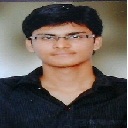Monday, 19 December 2016
UPSC Santhali Literature Syllabus
Posted by Unknown in: UPSC Santhali Literature Syllabus Paper-I
Part-I History of Santhali Language
I. Main Austric Language family, population and distribution.
II. Grammatical structure of Santhali Language.
III. Important character of Santhali Language : Phonology, Morphology, Syntax, Semantics, Translation, Lexicography
IV. Impact of other languages on Santhali.
V. Standardization of Santhali Language.
Part-II History of Santhali Literature.
I. Literary trends of the following four periods of History of Santhali Literature.
(a) Ancient literature before 1854.
(b) Missionary period : Literature between 1855 to 1889 AD.
(c) Medieval period : Literature between 1890 to 1946 AD.
(d) Modern period : Literature from 1947 AD to till date.
II. Writing tradition in History of Santhali Literature.
Literary forms – Main characteristics, history and development of following literary forms.
Part-I : Folk Literature in Santhali-folk song, folk tale, phrase, idioms, puzzles and Kudum.
Part-II : Modern literature in Santhali
(a) Development of poetry and prominent poets.
(b) Development of prose and prominent writers.
(i) Novels and prominent Novelists.
(ii) Stories and prominent story writers.
(iii) Drama and prominent Dramatist.
(iv) Criticism and prominent critics.
(v) Essay, sketches, memoirs, travelogues and prominent writers. Santhali writers : Shyam Sunder Hembram, Pandit Raghunath Murmu, Barha Beshra, Sadhu Ramchand Murmu, Narayan Soren ‘Toresutam’, Sarada Prasad Kisku, Raghunath Tudu, Kalipada Soren, Sakla Soren, Digambar Hansda, Aditya Mitra ‘Santhali’, Babulal Murmu ‘Adivasi’, Jadumani Beshra, Arjun Hembram, Krishna Chandra Tudu, Rupchand
Hansda, Kalendra Nath Mandi, Mahadev Hansda, Gour Chandra Murmu, Thakur Prasad Murmu, Hara Prasad Murmu, Uday Nath Majhi, Parimal Hembram, Dhirendra Nath Baske, Shyam Charan Hembram, Damayanti Beshra, T.K. Rapaj, Boyha Biswanath Tudu.
Part-III : Cultural Heritage of Santhali tradition, customs, festival and rituals (birth, marriage and death).
Paper-II
Ancient Literature :Prose
(a) Kherwal Bonso Dhorom Puthi-Majhi Ramdas Tudu “Rasika”.
(b) Mare Hapramko Reyak Katha-L.O. Scrafsrud.
(c) Jomsim Binti Lita-Mangal Chandra Turkulumang Soren.
(d) Marang Buru Binti-Kanailal Tudu. Poetry
(a) Karam Sereng-Nunku Soren.
(b) Devi Dasain Sereng-Manindra Hansda.
(c) Horh Sereng-W.G. Archer.
(d) Baha Sereng-Balaram Tudu
(e) Dong Sereng-Padmashri Bhagwat Murmu ‘Thakur’
(f) Hor Sereng-Raghunath Murmu.
(g) Soros Sereng-Babulal Murmu “Adivasi”
(h) More Sin More Nida-Rup Chand Hansda
(i) Judasi Madwa Latar-Tez Narayan Murmu.
Section-B
Modern Literature
Part-I : Poetry
(a) Onorhen Baha Dhalwak-Paul Jujhar Soren.
(b) Asar Binti-Narayan Soren “Tore Sutam”
(c) Chand Mala-Gora Chand Tudu.
(d) Onto Baha Mala-Aditya Mitra “Santhali”
(e) Tiryo Tetang-Hari Har Hansda
(f) Sisirjon Rar-Thakur Prasad Murmu.
Part-II : Novels
(a) Harmawak Ato-R. Karstiars
(Translator-R.R. Kisku Rapaz).
(b) Manu Mati-Chandra Mohan Hansda
(c) Ato Orak-Doman Hansda
(d) Ojoy Gada Dhiphre-Nathenial Murmu
Part-III : Stories
(a) Jiyon Gada-Rup Chand Hansda and
Jadumani Beshra.
(b) Mayajaal-Doman Sahu, ‘Samir’ and
Padmashri Bhagwat Murmu ‘Thakur’
Part-IV : Drama
(a) Kherwar Bir-Pandit Raghunath
Murmu
(b) Juri Khatir-Dr. K.C. Tudu
(c) Birsa Bir-Ravi Lal Tudu
Part-V : Biography
Santal Ko Ren Mayam Gohako-Dr.
Biswanath Hansda.
About Admin of the Blog:

Imran Uddin is the founder of AllTechBuzz .He is a Tech Geek, SEO Expert, Web Designer and a Pro Blogger. Contact Him Here


.jpg)



.jpg)
.png)
0 comments:
Post a Comment